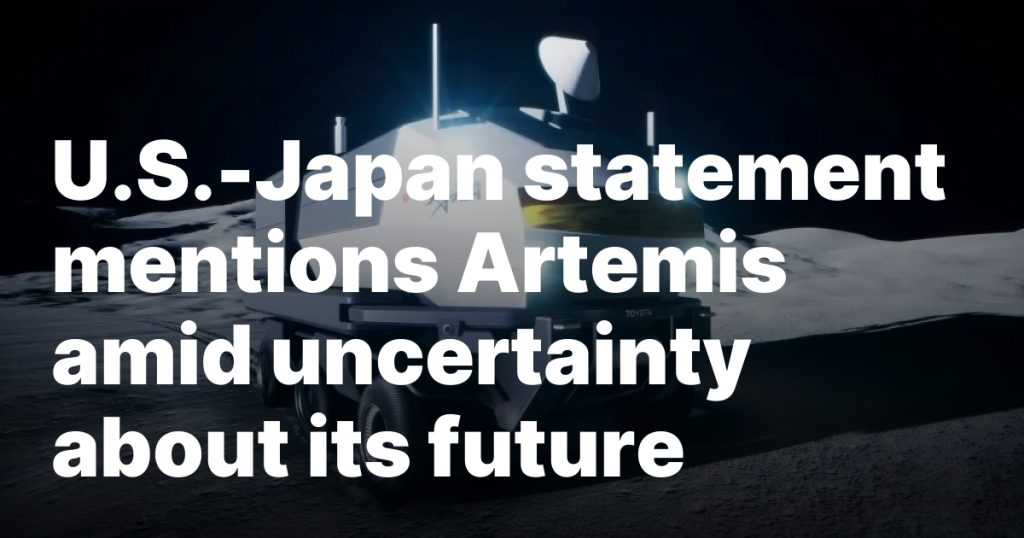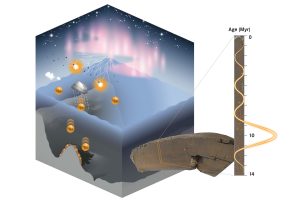WASHINGTON — A White House statement appeared to endorse NASA’s Artemis campaign of lunar exploration even as the space industry is preparing for significant changes to, or even cancellation of, elements of it.
The White House released Feb. 7 a joint statement linked to the visit of Japanese Prime Minister Ishiba Shigeru to Washington to meet with President Donald Trump, one that made a passing reference to the Artemis campaign of human lunar exploration.
“The United States and Japan intend to continue their strong partnership in civil space and on aeronautics, science, and human exploration, including on the upcoming Crew-10 mission to the International Space Station that includes U.S. and Japanese astronauts as well as lunar surface exploration on future Artemis missions,” the document stated.
The Crew-10 mission to the ISS, currently scheduled for launch no earlier than late March, will include astronaut Takuya Onishi from the Japanese space agency JAXA along with NASA astronauts Anne McClain and Nichole Ayers and Roscosmos cosmonaut Kirill Peskov. It is part of the series of routine crew rotation missions to the station.
More telling was the inclusion of the statement about Artemis, given widespread speculation that the new administration will propose major changes to the program or even cancel it entirely to focus NASA’s human spaceflight efforts on Mars. Elon Musk, the SpaceX chief executive and a close adviser to the president, has criticized the Artemis architecture and expressed his support for human Mars missions.
Making major changes to Artemis could upend international partnerships, including with Japan. JAXA is working with the European Space Agency on the Lunar I-Hab habitation module for the lunar Gateway along with other contributions that include logistics missions using a version of its HTV-X cargo vehicle.
NASA and JAXA also reached an agreement in April 2024 where JAXA will develop a pressurized lunar rover called Lunar Cruiser for use on later Artemis missions, enabling longer expeditions from Artemis landing sites. In return, NASA will deliver the rover on a cargo version of SpaceX’s Starship lunar lander and provide two seats on Artemis landing missions to JAXA astronauts, one of which would be as early as Artemis 4.
The joint statement came the same day as Boeing informed employees working on the Space Launch System program that up to 400 of them could be laid off in April. The company cited “revisions to the Artemis program and cost expectations” as reasons for the layoffs, with speculation that the administration will seek to cancel the launch vehicle.
One industry source, speaking on background, compared Artemis to Schrödinger’s Cat, the thought experiment from quantum mechanics used to describe superposition: simultaneously alive and dead as NASA continues work on its various programs amid the expectation that many elements of the effort will be altered or canceled by the new administration.
Members of Congress have said little about potential changes to Artemis, and the Senate Commerce Committee has yet to schedule a confirmation hearing for Jared Isaacman, the Trump administration’s nominee to be NASA administrator.
However, Rep. Brian Babin (R-Texas), chairman of the House Science Committee, signaled continued support for efforts to return humans to the moon during an organizational meeting for the committee Feb. 5.
“We will also advance legislation that supports the U.S. commercial space industry and keeps NASA on its mission to return Americans to the moon and establishes a pathway to Mars and beyond,” he said.








